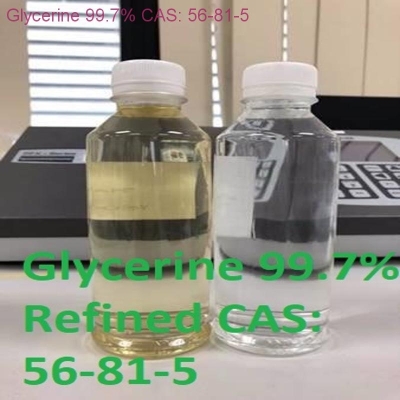-
Categories
-
Pharmaceutical Intermediates
-
Active Pharmaceutical Ingredients
-
Food Additives
- Industrial Coatings
- Agrochemicals
- Dyes and Pigments
- Surfactant
- Flavors and Fragrances
- Chemical Reagents
- Catalyst and Auxiliary
- Natural Products
- Inorganic Chemistry
-
Organic Chemistry
-
Biochemical Engineering
- Analytical Chemistry
- Cosmetic Ingredient
-
Pharmaceutical Intermediates
Promotion
ECHEMI Mall
Wholesale
Weekly Price
Exhibition
News
-
Trade Service
This article reports a case of gastrointestinal bleeding
due to small intestine-extrailiac artery fistula.
Case information
The patient, 61 years old, had 5 episodes of blood in the stool 1 day ago without obvious trigger, the blood in the stool was dark red, mixed with stool, and the patient was accompanied by high fever, and the body temperature was about 102°F (about 38.
9°C).
2 months ago, due to endometrial cancer, parallel hysterectomy, bilateral adnextomy of the uterus, lymph node dissection
.
Heart rate 133 beats / min, blood pressure 109/81 mmHg
.
Laboratory tests: hemoglobin 98 g/L, leukocyte count 12.
9 × 109/L, platelet count 202 ×109/L
.
Patients have elevated
fibrinogen (4.
6 g/L) and D-dimer levels (6.
4 g/L).
Enhanced CT of the whole abdomen (Figure 1a) suggests that there is a mixture of density shadows in the right pelvic cavity, containing gas, and poor
continuity of the blood vessel wall of the right extrailiac artery.
After 12 hours, the patient reappears in bloody stools (2000 mL) and complains of dizziness and fatigue
.
After initial resuscitation and stabilization of vital indicators, angiography (Figure 1b) is performed to indicate that the contrast agent has spilled from the right extrailiac artery to the surrounding area
.
Figures 1a, 1b
Considering that further bleeding could worsen the patient's condition, she underwent a laparotomy surgery
.
During the operation, the right extrailiac artery was found to rupture, which was tightly attached to the small intestine, forming a deep blind fistula, surrounded by blood clots and necrotic tissue
.
Right extrailiac artery ligation, small intestinal perforation repair, followed by femoral artery (FF bypass) bypass grafting for vascular reconstruction
.
The patient recovered well after surgery and was followed up for 1 year
.
One year later, CT examination (Figure 2a) showed that unlike before surgery, the patient had a local absence of the right extrailiac artery, and the mixed density shadow and gas disappearance
in the right pelvic cavity.
Three-dimensional CT (Figure 2b) confirms that the right iliac artery is non-perfused and that blood flow to the right femoral artery is good
through FF bypass.
Figures 2a, 2b
Knowledge mini-class
The small intestine-extrailiac fistula (AEF) is rare but potentially fatal and usually presents with unexplained gastrointestinal bleeding and fever, and in severe cases even massive blood and death
in the stool.
CT and angiography are the most appropriate diagnostic modalities, and laparotomy is often required to confirm the diagnosis
.
The disease has two forms: primary disease caused by trauma, radiation therapy, tumor invasion, or penetrating ulcers and secondary disease associated with previous nonvascular abdominal or pelvic surgical interventions
.
In this case, the patient caused damage to the right extrailiac artery during surgery for radical endometrial cancer 2 months ago, followed by adhesions and fistula
.
Treatment of AEF is extensive, but there is no consensus
on the optimal treatment of it.
It is currently believed that early survival in treatment of secondary AEF, intravascular surgical treatment is superior to open surgery, especially in
patients with heavy bleeding.
However, endovascular surgery is not always feasible or effective, and in unstable patients, an emergency switch to open surgery
is required.
References:
Yu J, Wang K, Wang X.
Gastrointestinal: A rare
case of gastrointestinal bleeding caused by arterio‐enteric fistula[J].
Journal
of Gastroenterology and Hepatology, 2022.







